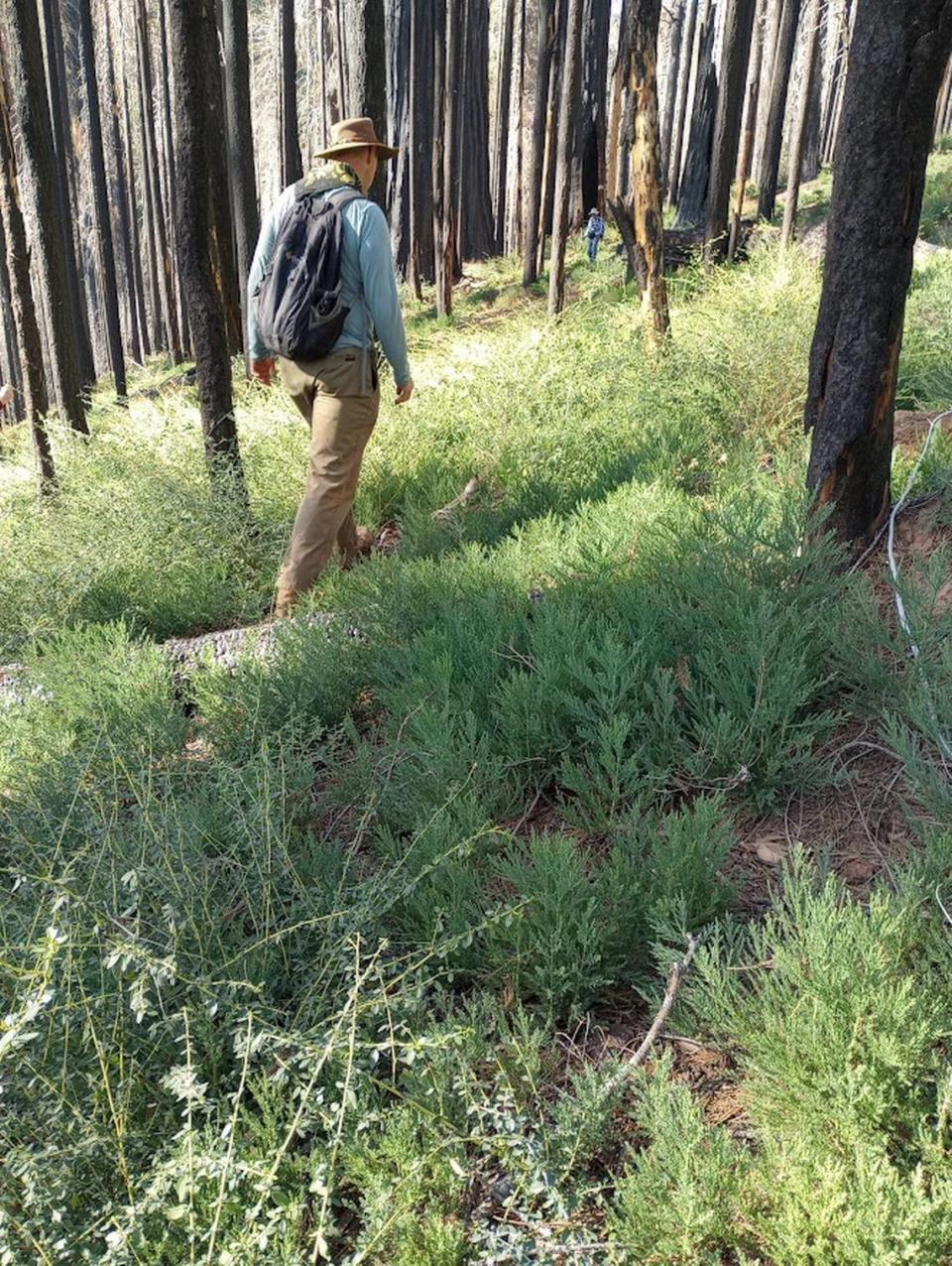U.S. Park Service ignores evidence in misguided sequoia planting project | Opinion
Two years ago, a mixed-intensity fire burned through Redwood Mountain sequoia grove in Sequoia and Kings Canyon National Park, including a few hundred acres of high-intensity fire.
The National Park Service quickly assumed the high-intensity fire area was too hot, and few, if any, sequoia seedlings would grow. Believing no natural regeneration would occur, officials devised a plan to plant up to 400 sequoia seedlings per acre in designated wilderness areas. Nature did not cooperate.
Now, the park service’s own data indicate incredible rates of new sequoia seedling regeneration. It turns out high-intensity fire is ideal for sequoia regeneration. In many places, tens of thousands of sequoia trees are growing per acre; a proverbial sea of new sequoia trees. Pictures barely do it justice.
Unwilling to admit that they were wrong, the Park Service approved its replanting project on Oct. 5th, and the misguided project could begin any day. But little about this project makes sense.
The Park Service plans to plant in areas with less than 14,112 sequoia seedlings per acre. That’s a lot of seedlings – roughly one tree every three square feet. In areas we surveyed, year-old seedlings are already two to three feet tall, and they are so abundant it is difficult to walk without fear of stepping on them.
Frankly, planting crews will likely crush just as many seedlings as they plant in such places.
Nor does the Park Service explain how 400 additional, hand-planted, 3-inch-tall seedlings per acre would materially improve the chances of sufficient sequoia regeneration where thousands of much taller and better established seedlings are already rapidly growing. As Marek Warszawski noted in The Bee, it would make logical sense to plant in an area with no naturally regenerating trees, but the Park Service’s own data indicate there is now sequoia regeneration in 100% of the locations they surveyed in the high-intensity fire area.

It gets worse. The Park Service released its planting maps, and planting is to occur in areas with greater than 14,112 seedlings per acre. The Park Service dismissed our concerns, claiming in a recent email that field crews would be trained to somehow visually guess which areas have more than 14,112 sequoia seedlings per acre and supposedly avoid such areas — a feat that the most seasoned scientists could not accomplish.
The thing is, there is nothing magic about the 14,112 per acre number. In fact, the research upon which the Park Service relies contradicts their planting proposal, and shows that areas with only dozens or hundreds of sequoia seedlings per acre at year two post-fire have far more seedlings by five years post-fire.
One may ask, what is the harm? There are two main concerns: (1) the project is an unprecedented intervention in National Park Wilderness; and (2) there is a real threat planting could cause irreparable harm to the sequoia grove. The planting plan proposes helicopters, chainsaws, explosives, and mule teams for years in wilderness areas, all of which will alter the unspoiled landscape and interfere with the public’s right to quiet enjoyment of these natural spaces.
Even more concerning is the threat of infecting the sequoia groves with deadly, invasive root pathogens that are pervasive in most tree seedling nurseries. The pathogens can spread and infect native seedlings and mature sequoia trees as well, stunting growth, or even causing widespread tree mortality. Just one of the several dozen species of these pathogens killed 50 million trees in California after planting. Days ago, it was revealed that the nurseries the Park Service is using for this project are not on the list of accredited nurseries using the new protocols that prevent these deadly infections. The Park Service concealed this fact from the public.
We should trust in the resilience and persistence of these majestic trees. They have survived for eons without assistance, and do not appear to need help now. The risks related to this project outweigh any benefit.
J eremy Clar, based in the Fresno area, is the chair of the Tehipite Chapter of the Sierra Club. Chad Hanson is a research ecologist with the John Muir Project, and the author of the book Smokescreen .

